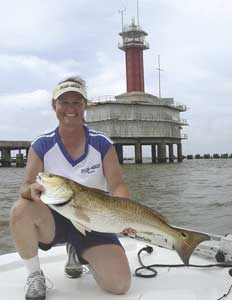
These five lakes are packed with hard-fighting panfish
While talking to one of my avid fishing friends about a very successful fishing trip I made, I began to tease him when he asked where we caught the fish.
I told him that we caught a big mess of fish in White Linen Bay.
Like the aggressive trout that soon would grace my dinner table, he took the bait.
“What? Where’s White Linen Bay?” he asked.
Now I set the hook hard.
“It’s just west of Bay Without Timber,” I told him. “You know, we fished it before. It’s out of Port Sulphur.”
I really had him going. He was running deep and strong with the bait.
“You remember,” I said. “The same place where we limited out over the oyster reefs year before last.”
He still had that puzzled look on his face, and again asked, “Where?”
I didn’t want him to shake the hook, so I asked, “Aren’t you bilingual?”
“Heck, no,” he said. “I’m Baptist, why?”
And then we both started laughing.
By then he realized I was referring to Bay Batiste (White Linen Bay) and Bay Sansbois (Bay Without Timber).
Laughing together, we recalled our previous trip to Bay Batiste, where I had lost an expensive rod and reel while hitting a rogue wave in my boat. Boy, did I cry and moan over the loss of that rig.
As for the names of these bays, one could easily see how Bay Sansbois got its name. The only timber anywhere around the bay is that which is used in man-made camps and dams on the canals that parallel the shoreline of the bay.
As for Bay Batiste, I recall being on this very shallow bay one spring day trying to outrun a squall that turned the water into a white foam.
Remembering back then, it looked almost as if we were running on a large piece of white linen lace, hence White Linen, or Batiste Bay. Heck, if the bay hadn’t already been named, I would have offered that name for it. It fit the occasion.
The names of these two bays caused us both to reflect and to ask each other how and why some of the features were named by the early settlers. We spouted out the obvious ones, like Baton Rouge (Red Stick), LaRose (The Rose), River aux Chenes (Oak River) and Ville Platte (flat town or village).
Then we began to realize there were many, many more names that described Louisiana sites. Some names were obvious and we knew the translations, but we were both at a loss as how many of the other features got their names.
I became intrigued with the translation, the etymology and history of some of these Louisiana names. I began to keep a log of some of the locations along with their translated names. Whenever time allowed, I researched the name of the location to determine how or why the place was named.
This endeavor made me keenly aware of the many, many different languages used to name our Louisiana cities, rivers, bayous, creeks, bays, lagoons and islands that are located throughout the state. I have grown to really appreciate the unique culture that we as Louisianans have.
Only Louisiana.
Click here to read the rest of this article, which first appeared in the April 2006 issue of Louisiana Sportsman. Don’t forget to subscribe today to ensure you don’t miss a single information-packed issue.


